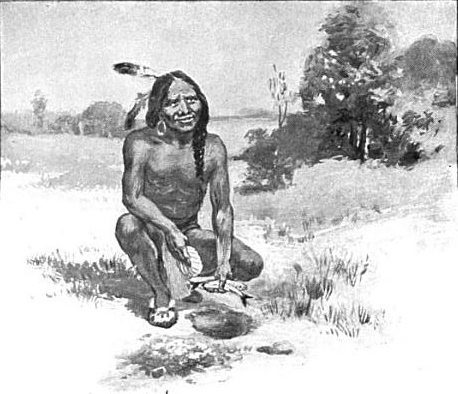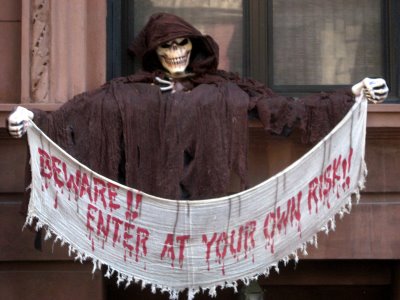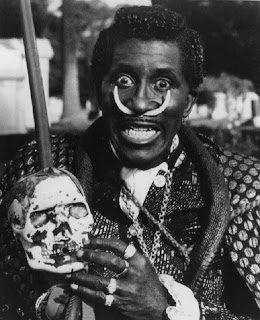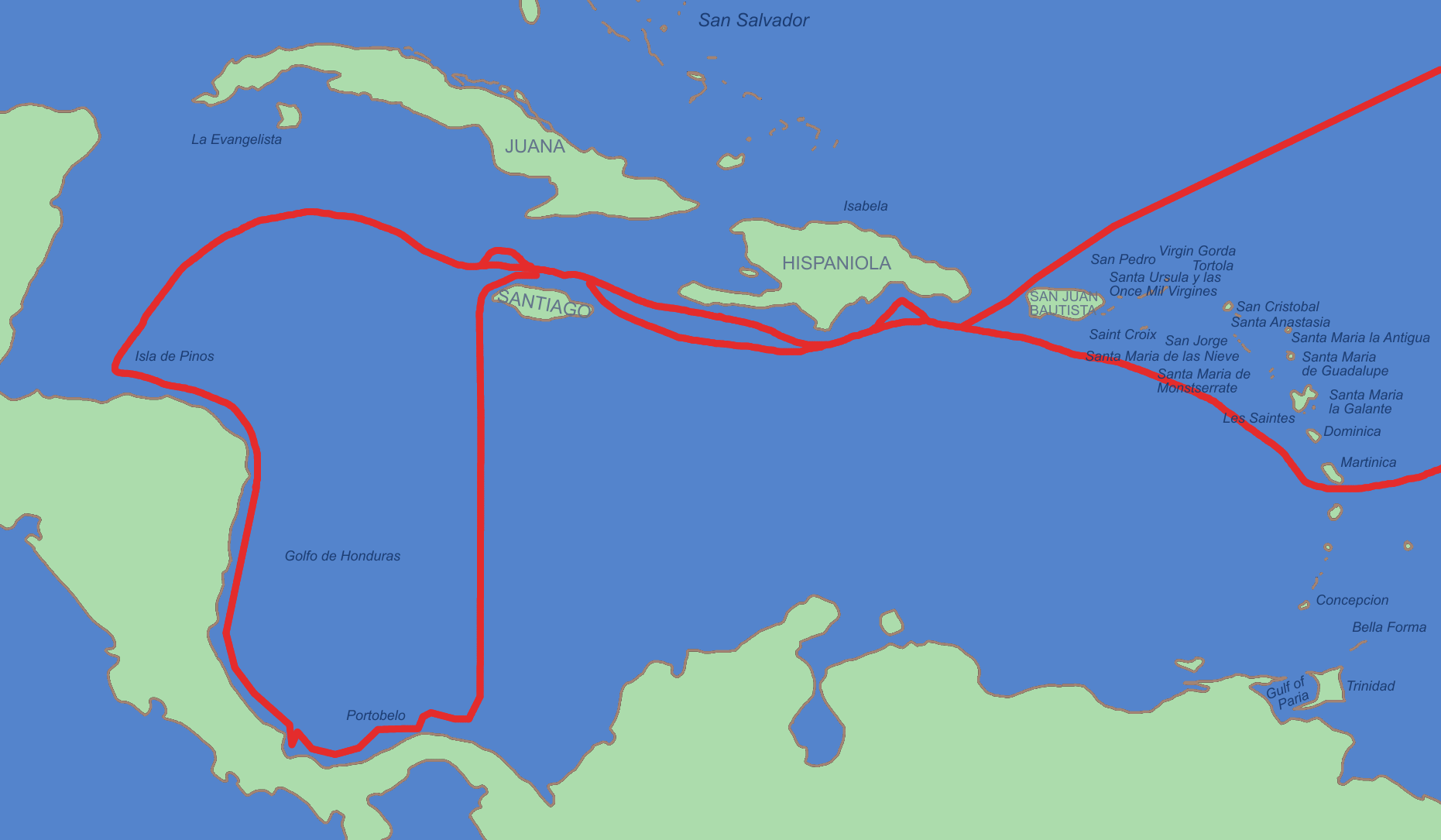So, it's official. PNC Financial has released their yearly cost for the 12 days of Christmas. You remember the song: five golden rings, a partridge in a pear tree, etc. Every year, PNC Financial releases the cost of the "12 Days of Christmas" song based on the financial numbers of the prices for the items, or what they call the "Christmas Price Index".
So here are the costs for each of the twelve days:
One partridge in a pear tree: $199.99
Two turtle doves: $125.00
Three french hens: $165.00
Four calling birds: $599.96
Five golden rings: $750.00
Six geese-a-laying: $210.00
Seven swans-a-swimming: $7000.00
Eight maids-a-milking: $58.00
Nine ladies dancing: $7552.84
Ten lords-a-leaping: $5243.37
Eleven pipers piping: $2635.20
Twelve drummers drumming: $2854.50
Total of those added up would come to $27,393.17. If you kept track of last year's Christmas Price Index, you'd note that this year's is up 7.7% from last year.
Quite pricey. But that's only if you went through the song without repeating everything. Remember that the song starts at the first day. On the second day, it's the partridge and the turtle doves. On the third day, it's the french hens, the turtle doves, and the partridge. And so on. So if you repeat everything, how much does that cost? $114,651.18. This is over $7,000 more expensive that last year's.
What were the highest increases? The lords-a-leaping went up 10% (1% for each lord); the calling birds went up 15.4%; and the nine dancing ladies went up by 20%.
The other thing to keep in mind is that these prices are only based on buying them without shipping. If you added each line above and then added shipping, the total cost would be over $12,000 more.
expendablenlightenment
Some call it trivia and some call it little known facts. We like to call it expendablenlightenment. This blog is brought to you by Metro Business College, courtesy of Metro's Info-Nation.
Wednesday, December 18, 2013
Wednesday, November 27, 2013
Squanto's Story That the History Books Leave Out
Everyone remembers the story of Squanto: the Native who was sold into slavery, learned English, returned to America, befriended the Pilgrims, and helped them survive a very harsh winter. It's a nice story, but as is common with history, it's the story people want to remember. But it's not the whole story.
Squanto was actually known as Tisquantum. Historians don't agree on when he was born, though they usually attribute January 1 as he birthday. As to what year he was born, that also is up for debate. Some say as early as 1580, others say 1592, and others say somewhere in between. Tisquantum was born around the area of Plymouth as a member of Patuxet tribe, which was a member of the Wampanoag Confederacy of tribes.
 |
| Common picture of Tisquantum (Squanto) |
His story begins when he was captured by Captain George Weymouth in 1605. Weymouth had been commissioned by the Plymouth Company (owned by Sir Fernando Gorges) to explore the coasts of what would later be called Massachusetts and Maine. Along with Tisquantum, Weymouth also captured four Penobscots, believing that his financial backers would like to see some Indians. Weymouth returned to England and presented Tisquantum to Sir Gorges. Sir Gorges then taught Tisquantum English, the ways of England, and hired him to return to the New World to be an interpreter and guide.
In 1614, Tisquantum returned to New England with Captain John Smith, but he was subsequently captured again. This time, it was by English explorer Thomas Hunt, who then sold Tisquantum into slavery in Spain. He escaped and lived with some monks for a couple years. He eventually made his way back to New England again in 1619, only to find that his entire tribe had been wiped out by a plague (commonly believed to be smallpox). With no home, he chose to live with the Wampanoags.
On March 22,1621, the Tisquantum was introduced to the Pilgrims, and went on to teach the Pilgrims to fish and cultivate the land. Chief Massasoit appointed Tisquantum to be liaison between the tribe and the Pilgrims. Tisquantum went on to lead members of the Pilgrims on exploratory missions in the area, help find lost members of the group, and continue to educate the Pilgrims on the land.
In the summer of 1621, Tisquantum and his companion Hobomok were sent to spy on Corbitant, a member of the Wampanoag tribe who was very anti-English. Corbitant harassed the two, and fearing for their lives, they tried to flee, but only Hobomok escaped. He appealed to the Pilgrims, and Miles Standish rallied a few men who marched to free Tisquantum. The Pilgrims attacked a Wampanoag village, but Corbitant had already released Tisquantum and fled by then.
Hobomok had been assigned to watch over Tisquantum because Massasoit didn't trust Tisquantum. He felt that Tisquantum had been getting too close to the Pilgrims. Massasoit's fears were realized when Tisquantum began to abuse his power by threatening the Wampanoags that the English would release plague to them if they didn't do what he said. Massasoit had been distrusting of him anyway, but that was the last straw.
In late November, 1622, Tisquantum was on his way back from a meeting of the Wampanoags and Pilgrims (whose relations had been deteriorating due to his own abuse of power) when he became gravely ill: bleeding from the nose and having a fever. A few days later, he died. Although most people assume it was smallpox, there are growing beliefs that he had actually been poisoned by the Wampanoags. One reason that smallpox seems odd is that he had been to Europe twice and had lived around English settlers for a year and a half. The reason so many of the Natives died of disease in this time is because they had no natural immunities built up against diseases from Europe. One would have thought that taking Tisquantum to Europe twice would have made him catch something, but apparently not. Either he was very lucky before, or someone gave him something to make him die.
Either way, his name lives on in history books as simply Squanto, the Indian who taught the Pilgrims to plant a fish with their corn and taught them how to fish. The truth though is always a little bit different than what is commonly remembered.
Wednesday, November 20, 2013
Beatles Banned from Israel?
In 2008, the nation of Israel sent a formal letter of apology to Paul McCartney and Ringo Starr and members of the Lennon and Harrison families. Why? Because back in the 1960's, Israel banned the Beatles.
Yes, you read that correct: Israel banned the Beatles. But where did this come from, you ask? Was it from anti-Semitic behavior or acts? McCartney's father was a bit anti-Semitic himself, who wasn't sure it was a good idea for the band to put their trust in their (at the time) new manager Brian Epstein, who was Jewish. Lennon himself is on record with making anti-Semitic jokes at the expense of Brian Epstein.
Or was it the event in 1968 for publicity? Upon the release of the new single "Hey Jude", McCartney thought it would be a good idea to paint the name of the song right in the middle of London's business district. This didn't go well having "Hey Jude" painted there. Jewish residents called Apple Records to complain about the paint work. Why? Because it was reminiscent of the Nazi act of painting German businesses owned by Jewish citizens with "No Juden" or "Juden Owned". Certainly this didn't help the relations with Israel. But was that the cause?
Actually, no. Israel banned the Beatles in 1965, a full three years before the failed publicity stunt. So why were they banned? For the same reason that many conservative families didn't like the Beatles. The key is in an Israeli Resolutions 691 and 709.
 |
| Paul McCartney performing in Tel Aviv, 2008 |
Or was it the event in 1968 for publicity? Upon the release of the new single "Hey Jude", McCartney thought it would be a good idea to paint the name of the song right in the middle of London's business district. This didn't go well having "Hey Jude" painted there. Jewish residents called Apple Records to complain about the paint work. Why? Because it was reminiscent of the Nazi act of painting German businesses owned by Jewish citizens with "No Juden" or "Juden Owned". Certainly this didn't help the relations with Israel. But was that the cause?
Actually, no. Israel banned the Beatles in 1965, a full three years before the failed publicity stunt. So why were they banned? For the same reason that many conservative families didn't like the Beatles. The key is in an Israeli Resolutions 691 and 709.
Resolution 691: Resolved: Not to allow the [Beatles'] request for fear that the performances by the Beatles are liable to have a negative influence on the [country's] youth.
Resolution 709: …the band has no artistic merit… [performances] cause hysteria and mass disorder among young people.
Many American conservative groups wouldn't buy into the merits of the British band for the exact same reasons, but it was Israel that banned them. It was 43 years later when they finally apologized and allowed the surviving members to return. On September 26, 2008, Paul McCartney was the first Beatle to perform a concert in Israel. It was the "Friendship First" concert which celebrated the 60th anniversary of the Israeli state.
Wednesday, November 13, 2013
Is the St. Paul Sandwich from St. Paul?
If you have ever been to a Chinese restaurant in St. Louis, you will probably have noticed St. Paul sandwiches. But what are these sandwiches and where did they come from?
There are two theories as to where they came from.
The first theory is that it was created in the 1940's by Steven Yuen at Park Chop Suey in Lafayette Square and named after his hometown of St. Paul, Minnesota. It is said that he created it because Chinese food was beginning to be popular with non-Asian people, and he wanted to create something that they were a little more used to: a sandwich.
The second theory is that it was created by Chinese immigrant railroad workers. St. Louis was a large railroad town at the time, so many Chinese immigrants came through St. Louis. They created the sandwich for lunches since it was simple and easily portable. As legend has it, since it was not easy for the immigrants to say "Louis", they changed it to a more simple name: "Paul".
Whichever is true, what's clear is that the sandwich has stood the test of time. It was originally contained four slices of bread with chicken and egg stuffed inside. Now, the sandwich is two slices of white bread, an egg foo young patty, pickles, onions, mayo, lettuce, and tomato, and sometimes with either chicken, pork, beef, or shrimp.
You can't find hardly any St. Louis Chinese restaurants that doesn't have the St. Paul sandwich. But you can find it elsewhere too. These sandwiches have popped up in other Missouri cities such as Jefferson City, Columbia, and Springfield. These sandwiches have also begun to pop up in California and Oregon. Sometimes, they are referred to as things like 'egg foo young on a bun', but it's basically the same thing.
 |
| The St Paul Sandwich |
The first theory is that it was created in the 1940's by Steven Yuen at Park Chop Suey in Lafayette Square and named after his hometown of St. Paul, Minnesota. It is said that he created it because Chinese food was beginning to be popular with non-Asian people, and he wanted to create something that they were a little more used to: a sandwich.
The second theory is that it was created by Chinese immigrant railroad workers. St. Louis was a large railroad town at the time, so many Chinese immigrants came through St. Louis. They created the sandwich for lunches since it was simple and easily portable. As legend has it, since it was not easy for the immigrants to say "Louis", they changed it to a more simple name: "Paul".
Whichever is true, what's clear is that the sandwich has stood the test of time. It was originally contained four slices of bread with chicken and egg stuffed inside. Now, the sandwich is two slices of white bread, an egg foo young patty, pickles, onions, mayo, lettuce, and tomato, and sometimes with either chicken, pork, beef, or shrimp.
You can't find hardly any St. Louis Chinese restaurants that doesn't have the St. Paul sandwich. But you can find it elsewhere too. These sandwiches have popped up in other Missouri cities such as Jefferson City, Columbia, and Springfield. These sandwiches have also begun to pop up in California and Oregon. Sometimes, they are referred to as things like 'egg foo young on a bun', but it's basically the same thing.
Wednesday, November 6, 2013
The Wow! Signal
Ever since the late 1940's, Americans have been infatuated with the little green men from Mars. Scifi movies have become an art form in American cinema as a result. So in 1977 a movie called 'Close Encounters of the Third Kind'. In that same year, a real event occurred that would seem to have come straight from the movie. On August 15, 1977, a SETI project in Ohio received a signal that seemingly came from the stars. Was it extraterrestrial life?
The signal received in 1977 was not science fiction but an actual event. It has become known as the 'Wow! Signal' because on the paper printout of the signal, the man who detected it (Jerry Ehman) wrote 'Wow!' next to the signal. The reason for his excitement? The signal matched closely the signal of an radio transmission. The implications of this are obvious: if it didn't come from earth, where did it come from?
No one really knows where the signal originated from. If you look in the night sky at the constellation Sagittarius, that is where the signal is believed to have originated, although there is speculation as the exact location.
Shortly after, Ehman tried to find the signal again for the next while, but he couldn't find it. Attempts by others were made in 1987, 1989, 1995, 1996, and 1999 to find the signal, but each attempt was met with nothing. In 2012, on the 35th anniversary, scientists beamed a response of 10,000 Twitter messages in the direction of the signal as well as header messages which show that the messages are intentional and from an intelligent life form.
Although there is much speculation to this day as to whether the signal was natural or created by another life form or even if it was something from ourselves, the Wow! Signal has peaked the imagination and curiosity of scientists and astronomers all over the world. Until the mystery is solved, they will continue to search and listen.
The signal received in 1977 was not science fiction but an actual event. It has become known as the 'Wow! Signal' because on the paper printout of the signal, the man who detected it (Jerry Ehman) wrote 'Wow!' next to the signal. The reason for his excitement? The signal matched closely the signal of an radio transmission. The implications of this are obvious: if it didn't come from earth, where did it come from?
 |
| Original printout of the Wow! Signal |
Shortly after, Ehman tried to find the signal again for the next while, but he couldn't find it. Attempts by others were made in 1987, 1989, 1995, 1996, and 1999 to find the signal, but each attempt was met with nothing. In 2012, on the 35th anniversary, scientists beamed a response of 10,000 Twitter messages in the direction of the signal as well as header messages which show that the messages are intentional and from an intelligent life form.
Although there is much speculation to this day as to whether the signal was natural or created by another life form or even if it was something from ourselves, the Wow! Signal has peaked the imagination and curiosity of scientists and astronomers all over the world. Until the mystery is solved, they will continue to search and listen.
Wednesday, October 30, 2013
Haunted Attractions, Pepper's Ghost, Screaming Jay Hawkins
Haunted Houses are an essential part of Halloween. They include both practical effects, psychological effects, and special effects. But where did these come from and what exactly is out there?
The first special effects that are associated came about because of Pepper's Ghost. This trick was created in the late 1800's by John Henry Pepper. It simply takes an L shape, cutting it in half by a plate of glass and a mirror next to the glass. The audience can only see one half of the L. In the side the audience can't see, there is an actor wearing a ghostly outfit and the room looks identical to the room the audience can see. When the lights are lit in a certain way, the reflection of the actor appears to the audience as being transparent. With changing the lighting, the actor can appear to morph into something else or disappear completely. This trick has been used in countless haunted attractions, stage shows, movies, and carnivals.
The first haunted attractions came about as part of the carnivals and circuses of the early 20th Century. Sideshows, freak shows, oddity museums, fun houses, and dark rides were staples of the carnival experience. The first haunted house attraction (that is credited as such) was the Orton and Spooner Haunted House in 1915, which drew inspiration from the scary moral tales that parents would tell their children to keep them from doing bad things.
There wasn't a large understanding of haunted attractions as we know them today. From the 1930's-60's, movie theaters would pair a scary movie with a live feature, which would be seances, magicians, or other seemingly other worldly acts. These events were called "Midnight Spooks".
The birth of shock rock had a direct influence on the haunted attraction. Shock rock was created in the 1950's and has continued to adapt ever since. These bands used horror themed imagery to shock the audience in addition to the music. Probably the first of these was Screaming Jay Hawkins, who would perform "I Put a Spell on You" and rise from a coffin.
The shock rock performances really amped up the scare factor that could be used in haunted attractions. Haunted attractions began to pop up across the country. In the 1970's and 80's, charity haunted attractions began to pop up with proceeds going to charities. In those days, there were few prop companies in existence, so usually the imagery had to be created by the owners. The artistry was crude at best most of the time. By the 90's, prop companies were feeding off the increase of prop companies that exploded due to the success of horror movie franchises in the 80's.
In the 90's a religious movement was used to take attention away from Halloween; this was called the Anti-Halloween Movement. These haunted houses were called hell houses and depicted scenes from hell and different forms of sin.
By the early 2000's, the haunted attraction industry was massive. Props were much better quality than they had been previously. New music emerged for the haunted attraction, called dark ambient, which added to the eerie sounds of haunted houses.
Today, there are all sorts of different types of haunted attractions, many of which are combined in a single attraction. The different attraction are haunted house, haunted experience, haunted forest/trail, haunted hayride, haunted theme park (also known as a screampark), dark maze or chain maze, hell house, dark ride, haunted cornfield maze, home haunt, ghost run, and yard haunt/yard display. The industry has grown into a multi-billion dollar industry. The quality now is top notch, and sure to scare you.
Check out a haunted attraction near you and have a happy Halloween!
 |
 |
| Diagram of the Pepper's Ghost Illusion |
There wasn't a large understanding of haunted attractions as we know them today. From the 1930's-60's, movie theaters would pair a scary movie with a live feature, which would be seances, magicians, or other seemingly other worldly acts. These events were called "Midnight Spooks".
The birth of shock rock had a direct influence on the haunted attraction. Shock rock was created in the 1950's and has continued to adapt ever since. These bands used horror themed imagery to shock the audience in addition to the music. Probably the first of these was Screaming Jay Hawkins, who would perform "I Put a Spell on You" and rise from a coffin.
 |
| Screaming Jay Hawkins in voodoo outfit - 1960's |
In the 90's a religious movement was used to take attention away from Halloween; this was called the Anti-Halloween Movement. These haunted houses were called hell houses and depicted scenes from hell and different forms of sin.
By the early 2000's, the haunted attraction industry was massive. Props were much better quality than they had been previously. New music emerged for the haunted attraction, called dark ambient, which added to the eerie sounds of haunted houses.
Today, there are all sorts of different types of haunted attractions, many of which are combined in a single attraction. The different attraction are haunted house, haunted experience, haunted forest/trail, haunted hayride, haunted theme park (also known as a screampark), dark maze or chain maze, hell house, dark ride, haunted cornfield maze, home haunt, ghost run, and yard haunt/yard display. The industry has grown into a multi-billion dollar industry. The quality now is top notch, and sure to scare you.
Check out a haunted attraction near you and have a happy Halloween!
Wednesday, October 23, 2013
The Fourth Voyage of Columbus
There is evidence from writings that Columbus knew he was not in the Far East, but there is evidence from other writings that he thought he was in the Far East. When the Fourth Voyage was under way, Columbus said he was looking for the Straight of Malacca, which is the body of water between Malay Peninsula and the island of Sumatra.
On May 11, 1502, Columbus and his crew set sail from Spain with four ships. He first landed on the Moroccan coast to rescue Portuguese who were under siege. He then landed on the island of Martinique on June 15. On June 29, the group landed at Santo Domingo (the capital port city). His group predicted that a hurricane was building, so they sailed to Hispaniola for safe harbor. Governor Bobadilla (who'd inherited the job two years earlier when Columbus was jailed) rejected the idea of Columbus having safe harbor, so he denied them the use of the port. Columbus pleaded with him that a hurricane was approaching and that they needed the safety of the port and that no ships should depart until the storm passed. Columbus then moved on to the mouth of a river for safety. Bobadilla not only wouldn't let Columbus have safe port, but he sent out the Spanish treasure fleet (a convoy system through the Spanish empire). While Columbus's ships had almost no damage, 29 of the 30 convoy ships were sunk on July 1 from the hurricane, taking a large cargo of gold, 500 lives, and even Bobadilla himself to the bottom of the ocean.
Columbus moved on and landed off the coast of Honduras on July 30, not arriving at the mainland until August 14. He then spent two months exploring the coasts of Honduras, Nicaragua, and Costa Rica. On October 16, he was in Panama. He learned of a path that opens to another ocean, and he looked for it, but on December 5, a major hurricane hit, hampering some of the search efforts. In January, 1503, he set up a garrison to help with the search. On April 6, one of his ships became stuck in the river near where the garrison was located. At the same time, the garrison was attacked by natives, and the other ships were damaged.
On April 16, they left, heading for Hispaniola. On May 10, they spotted the Cayman Islands. Off the coast of Cuba, they ran into another storm, which damaged the ships further. Battered and unable to travel any farther, his group landed on Jamaica on June 23. A member of the crew and some natives paddled to Hispaniola to get help for the stranded crew, but the new governor detested Columbus and not only wouldn't send help, he obstructed others from helping. Columbus and his crew remained stranded on Jamaica for a year. While on the island, he had to win over the natives so they would help feed them. He was able to do this by successfully predicting a lunar eclipse that occurred on February 29, 1504. Help finally arrived on June 29, 1504. The group finally made it back to Spain on November 7, 1504.
 |
| Columbus's Fourth Voyage |
Columbus moved on and landed off the coast of Honduras on July 30, not arriving at the mainland until August 14. He then spent two months exploring the coasts of Honduras, Nicaragua, and Costa Rica. On October 16, he was in Panama. He learned of a path that opens to another ocean, and he looked for it, but on December 5, a major hurricane hit, hampering some of the search efforts. In January, 1503, he set up a garrison to help with the search. On April 6, one of his ships became stuck in the river near where the garrison was located. At the same time, the garrison was attacked by natives, and the other ships were damaged.
On April 16, they left, heading for Hispaniola. On May 10, they spotted the Cayman Islands. Off the coast of Cuba, they ran into another storm, which damaged the ships further. Battered and unable to travel any farther, his group landed on Jamaica on June 23. A member of the crew and some natives paddled to Hispaniola to get help for the stranded crew, but the new governor detested Columbus and not only wouldn't send help, he obstructed others from helping. Columbus and his crew remained stranded on Jamaica for a year. While on the island, he had to win over the natives so they would help feed them. He was able to do this by successfully predicting a lunar eclipse that occurred on February 29, 1504. Help finally arrived on June 29, 1504. The group finally made it back to Spain on November 7, 1504.
Subscribe to:
Posts (Atom)